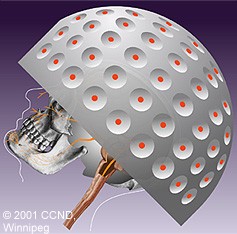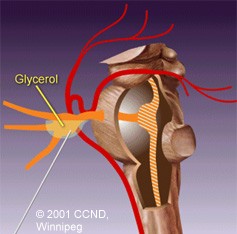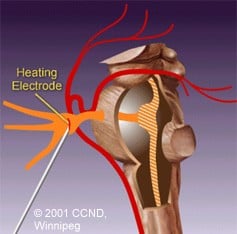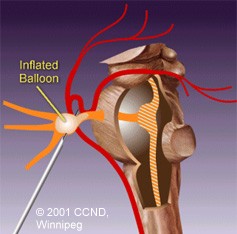Percutaneous Procedures
Percutaneous procedures are recommended for patients who have
complications with MVD. Each percutaneous procedure involves rhizotomy (nerve damage). Percutaneous procedures include
balloon compression, radiofrequency rhizotomy, neurolytic blocks, and
gamma-knife radiosurgery.
Negatives:
-pain relief may take
several months
-patients only have
pain-free intervals of 1.5-2 years only
-nerve is damaged and can no longer feel
-facial numbness and disfigurement is common
 Gamma-knife radiosurgery focuses high
concentration gamma radiation beams at the brainstem. This causes a
lesion which affects the brain's ability to send pain signals.
Gamma-knife radiosurgery focuses high
concentration gamma radiation beams at the brainstem. This causes a
lesion which affects the brain's ability to send pain signals.
 The neurolytic block (glycerol, alcohol, or
phenol injections) covers the ganglion - where nerve impulses are sent -
and injures it.
The neurolytic block (glycerol, alcohol, or
phenol injections) covers the ganglion - where nerve impulses are sent -
and injures it.
 Radiofrequency rhizotomy first pinpoints the
area of pain then uses an electrode to damage the nerve fibres in the
pain area.
Radiofrequency rhizotomy first pinpoints the
area of pain then uses an electrode to damage the nerve fibres in the
pain area.
 Balloon compression uses a catheter that
travels through the foramen ovale, one of the biggest holes in the
skull. A no.4 balloon on the end of the catheter is inflated to compress
the nerve.
Balloon compression uses a catheter that
travels through the foramen ovale, one of the biggest holes in the
skull. A no.4 balloon on the end of the catheter is inflated to compress
the nerve.



